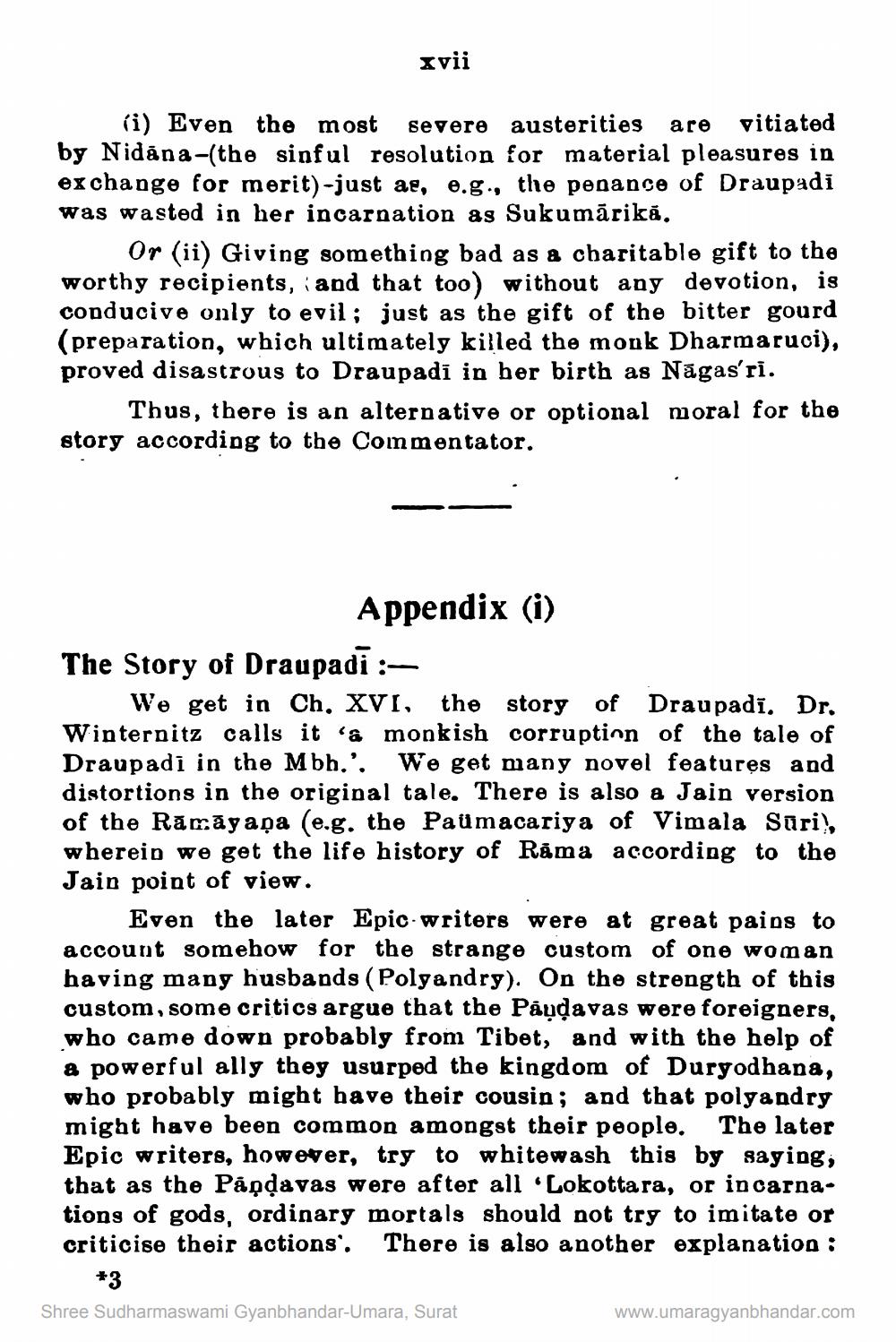________________
xvii
(i) Even the most severe austerities are vitiated by Nidana-(the sinful resolution for material pleasures in exchange for merit) -just as, e.g., the penance of Draupadi was wasted in her incarnation as Sukumārikā,
Or (ii) Giving something bad as a charitable gift to the worthy recipients, and that too) without any devotion, is conducive only to evil; just as the gift of the bitter gourd (preparation, which ultimately killed the monk Dharmaruci), proved disastrous to Draupadi in her birth as Nagas'ri.
Thus, there is an alternative or optional moral for the story according to the Commentator.
Appendix (i)
The Story of Draupadi :
We get in Ch. XVI, the story of Draupadi. Dr. Winternitz calls it a monkish corruption of the tale of Draupadi in the Mbh.'. We get many novel features and distortions in the original tale. There is also a Jain version of the Ramayana (e.g. the Paumacariya of Vimala Sūri, wherein we get the life history of Rama according to the Jain point of view.
Even the later Epic writers were at great pains to account somehow for the strange custom of one woman having many husbands (Polyandry). On the strength of this custom, some critics argue that the Pandavas were foreigners, who came down probably from Tibet, and with the help of a powerful ally they usurped the kingdom of Duryodhana, who probably might have their cousin; and that polyandry might have been common amongst their people. The later Epic writers, however, try to whitewash this by saying, that as the Pandavas were after all 'Lokottara, or in carnations of gods, ordinary mortals should not try to imitate or criticise their actions'. There is also another explanation:
*3
Shree Sudharmaswami Gyanbhandar-Umara, Surat
www.umaragyanbhandar.com




